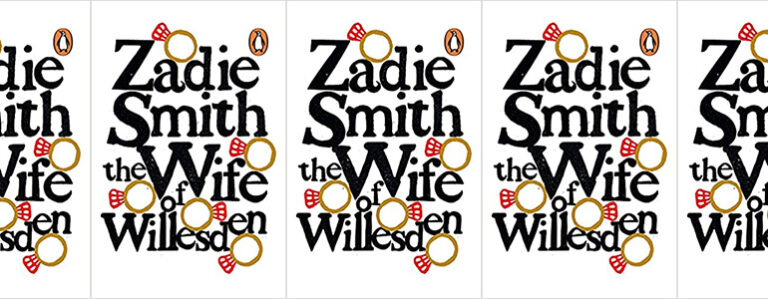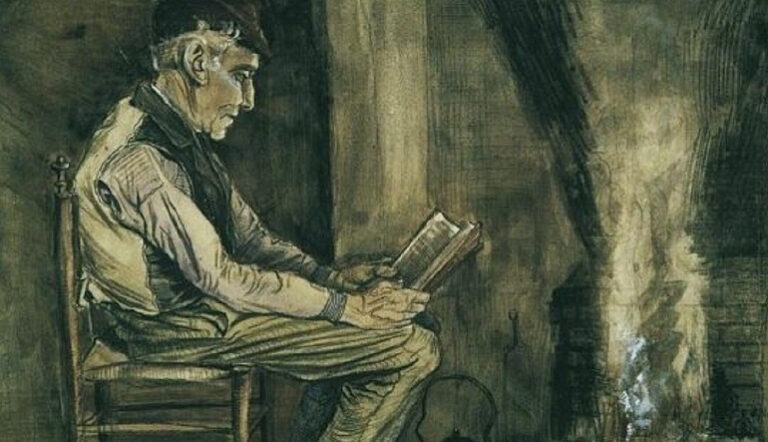The Dreamlike Language of Apocalypse

As the catastrophes plaguing our planet continue and many of our familiar rhythms and structures remain rearranged, or on hiatus entirely, I’ve been drawn to fiction and poetry in which cohesive narratives unravel, making way for unexpected structures and forms. This month I’ve been reading Cormac McCarthy’s novel The Road and Sabrina Orah Mark’s collection of prose poems The Babies. They’re obviously very different books, not only in genre, but also in tone, structure, content, and form. Both, though, are interested in the concept of apocalypse, and both swerve away from familiar narratives, deconstructing and repurposing everyday objects. In place of the familiar urgency of a forward-moving plot or the conventions of strict realism, these books dip into the dreamlike to express horror and disorientation. By doing so, they evoke a level of fear and foreboding that more traditional narrative structures often can’t contain. What’s left when narratives dissolve, when objects become unfamiliar, is unease and shock made fresh and surprising by the ways in which it’s evoked. This month, the crises were unrelenting. As ash clouded the west coast, as COVID-19 cases began to skyrocket in college towns, these were the books whose images resonated. They seemed to ward off numbness by constantly framing disorientation in new ways.
McCarthy’s The Road is engrossing. It also, though, often sidesteps traditional novelistic conventions. Its premise is simple: a nameless man and his son trudge through burnt forests after the end of the world, going south for the winter. Everything is already over; hopelessness prevails from the beginning. The book seems to move without an engine, ambling along as its characters do. Episodes unfurl without chapter breaks; scenes and images are paragraph-long, and time is hazy. It’s a novel about a journey, but with no real point of departure and no viable destination. It’s a survival story, but the cataclysm is obscure and the characters are always unsure whether there’s anything worth surviving for. It’s a family story, set in a world where most humans, roving through the forest in cannibal bands, wouldn’t be able to say what a family is.
McCarthy’s sentences are often unflinchingly detailed and descriptive, and yet the novel opens on an image that is otherworldly, darkly ethereal. The man has just woken from a dream in which he and his child wander into a cave. The language is fairytale-like: they are “[l]ike pilgrims in a fable, swallowed up and lost among the inward parts of some beast.” In the dream, the man sees a “creature . . . with eyes dead white and sightless as the eggs of spiders.” The image is nightmarish, but exists on a different plane from the pair’s waking life, juxtaposed against its gray monotony. The creature’s “pale bones cast up in shadow on the rocks behind it. Its bowels, its beating heart. The brain that pulsed in a dull glass bell.” The man’s dreams and memories consistently take on this vivid, hallucinatory quality. In one, “his pale bride came to him out of a green and leafy canopy . . . she wore a dress of gauze and her dark hair was carried up in combs of ivory, combs of shell.” In another, figures “stood on the far shore of a river and called to him. Tattered gods slouching in their rags across the waste.” In a memory of his pre-apocalyptic childhood, the man recalls watching while a group of “rough men” set fire to “a great bolus of serpents . . . Like the bowels of some great beast exposed to the day.” Each dream or memory promises familiarity at its beginning: a cave to hide in, a bride to kiss, a child surrounded by adults. And each image refuses the familiar ending, becomes ghastly, obliquely mirrors the novel’s starker waking world.
Similarly, the prose poems in The Babies often begin with the promise of a well-known tale or trope. They begin situated in details that seem concrete, descriptive. One poem, “The Mustache,” playfully begins: “Everything about the young foreign taxidermist was overdone. Did he absolutely have to wear the apron with the tiny red castles in the shop?” The universe of the poem has some familiar contours: the speaker is “the envy of the world, being hitched up with such a genius.” This could be the story of an unraveling partnership, told from after the relationship’s end. But just as we begin to think we know this story, the poem swerves into the surreal: “I didn’t notice the black mustache growing slowly but unmercifully on his left shoulder until two or three years into the affair. At first it seemed harmless. A small patch of dead grass. But eventually I couldn’t help but only see the large dark field. Its silent twitching. By then it was already early fall, and the fact is, it tore us apart.” The nonchalance of the speaker is funny and strange, and the image is impossible to categorize as metaphor, conclusion, or explanation. What the reader is left with is a feeling of unease, foreboding—that the poem has gone somewhere we didn’t expect it to go, has drawn in images from outside of our experience in order to bring us to a new, haunted plane.
Mark’s poems also locate strangeness in everyday objects, in their repurposing and their unexpected uses. In “The Song,” a mother falls in love with an ornithologist. (Sinister, professional categorizers are a recurring feature of the collection—they seem linked to the Holocaust references that surface throughout, perhaps suggesting the dangers of authoritarian labeling, a harbinger of violence.) In “The Song,” the daughter spies on her mother and the ornithologist. The ornithologist “cut for her a loaf of bread with a large pair of scissors. I could hear through his mischievous language. He had a plan. To get rid of the birds, he said. All the mildly foxed birds. He called it end low song.” The language is in a dreamlike register, but it disturbs—through the unfamiliar words we see the ornithologist’s premeditated, titled plan for eradication. The piece’s chilling final sentences are prefigured by the image of scissors cutting bread—an object made uncanny through its unconventional use.
Throughout the collection, familiar objects often act as portals into stranger worlds, where they are used for some other purpose. “The Visit” begins in realist territory, with the speaker declaring: “At 103 South Governor Street, Apartment One, I visit Old Gerta.” Gerta gives the speaker a key— ordinary enough. She then instructs the speaker to “‘Unlock my father and bring me a story.’” The speaker doesn’t hesitate: she is “reaching in. It has bits of bone sticking to it, and blood . . . I am scared of its closeness.” The image of a story physically extracted from inside a person makes literal the visceral discomfort of storytelling. A key that unlocks a person, like the scissors that cut bread, is a repurposed object. Both are points of entry into unfamiliar worlds. In The Road, too, familiar objects are literally deconstructed and put to new uses. A stove is broken into its component parts; a suit jacket is cut up to become footwear; a flare gun becomes a tool of attack rather than signaling. The scavenged, repurposed objects are frequent reminders of the post-apocalyptic world’s strangeness, its uncanny similarity to and extreme remove from our own.
In both books—and in stories of apocalypse in general—we glimpse something familiar, only to be reminded that we’re in a world that doesn’t operate according to the narrative structures or descriptive conventions we recognize. It’s because of this repeated defamiliarization that we feel a deep foreboding, that we don’t lose interest while reading, and don’t become desensitized to the haunted landscapes of these books. And by reading worlds of relentless darkness, repeatedly made new through the language of dreams and fables, we can maybe more deeply access empathy and hope for the world we’re living in.
This piece was originally published on September 16, 2020.


